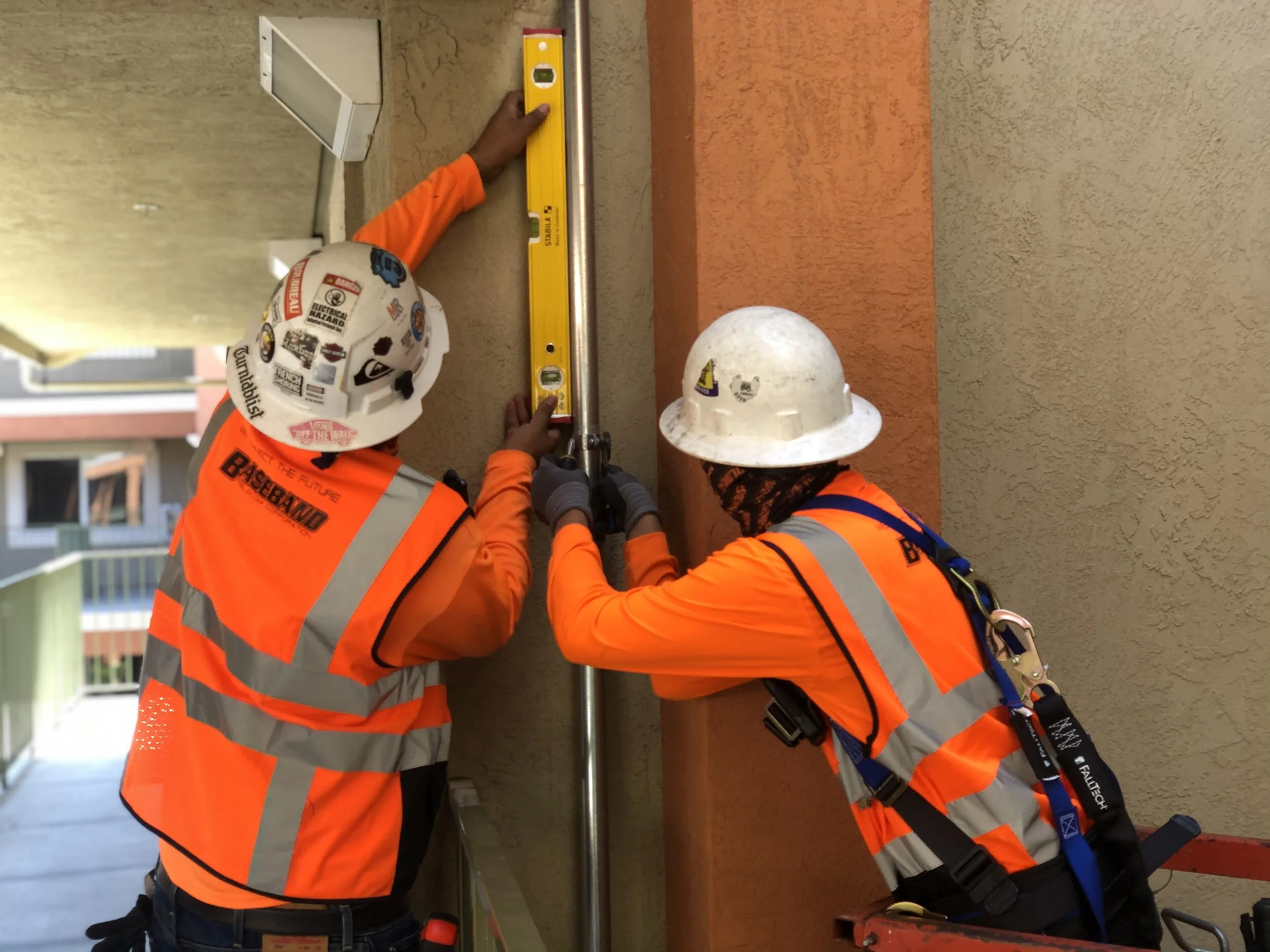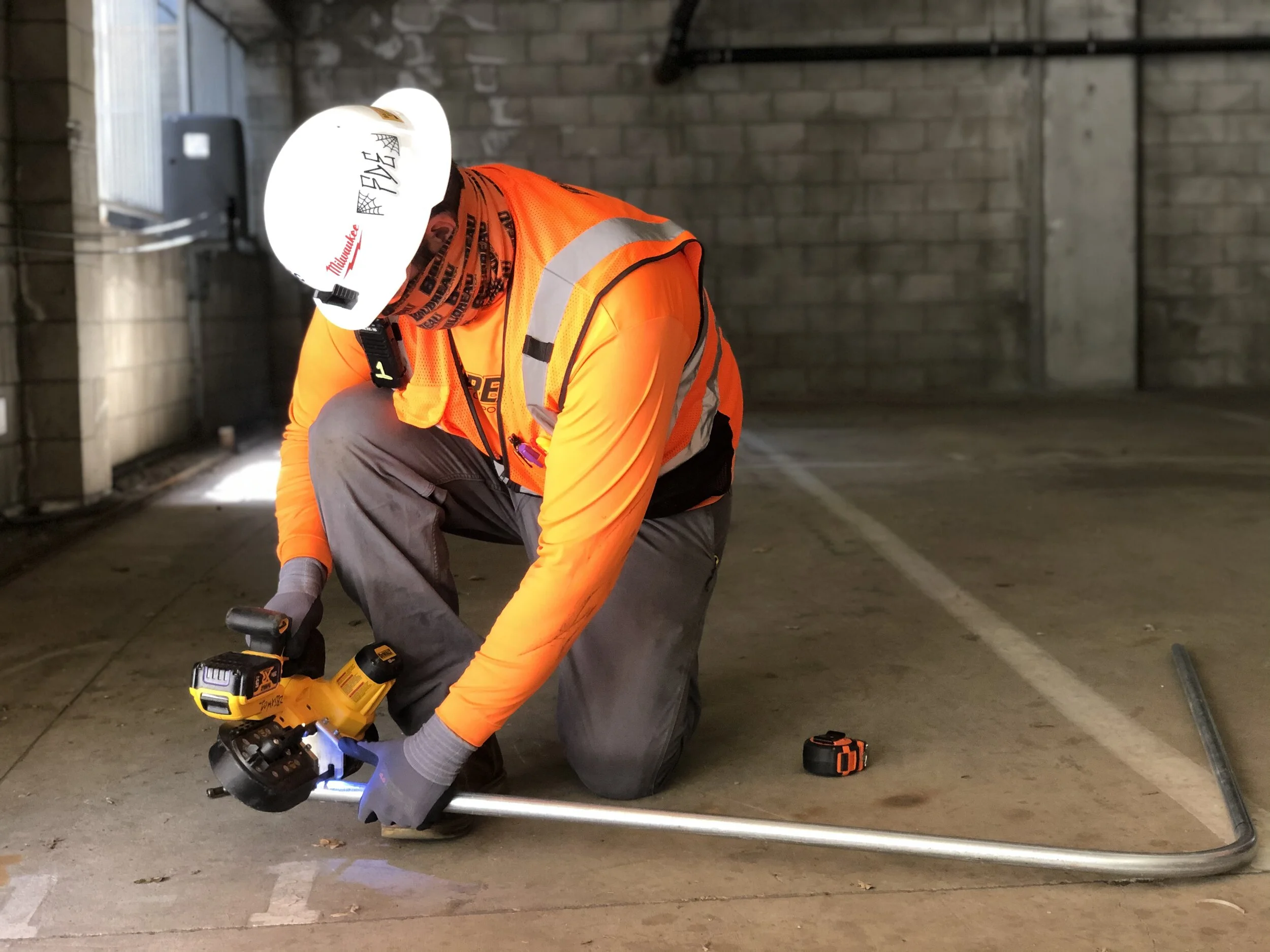Aerial Construction Services
Make Ready
Aerial Utility Construction and Placement
Strand Fiber, Copper & Coax and Anchor Placement
Overlash & Network Growth Projects
New Construction
Rebuild / Upgrade
Wreck-out and Removal
Pole Installation
Pole Transfers and Maintenance Services
Emergency Restoral
Underground Construction Services
Upgrade of Existing Underground Facilities
Horizontal Directional Drilling (HDD)
Microw-Trenching
Fiber Optic System
Cable Installation and Removal
Fiber Splicing Services
Splicers are technically trained, experience and certified.
Splicing crews utilize splicing vans. All crews have the required tools and test equipment.
Small Cells
Small Cells are an increasingly popular solution for extending wireless coverage an capacity. Filling gaps in wireless carriers’ macro networks, or to serve as a source for a DAS, Baseband Telecom has extensive experience in providing custom small cell construction services to suit facility needs. i.e., Commercial Real Estate, Sports & Entertainment, Hospitality, Healthcare, Higher Education, Local & State Government, Public Safety, Transportation & etc. Baseband Telecom has experience installing in building DAS systems and carrier Small Cell units in urban and suburban areas. Our employees have the expertise to install, maintain, test and troubleshoot carrier equipment and systems. We can install aerial and underground fiber and power feeds to any system or location the small cell is located even if utilities are miles away.
DAS, Small Cells, C-RAN/D-RAN, CBRS, and Wi-Fi. (Neutral Host and/or Enterprise Connect)
CBRS
CBRS enables many opportunities for businesses, municipalities, operators, and others looking to add or enhance wireless coverage. It also fits well into many use cases and brings the performance, security, and reliability the industry has come to appreciate and expect from wireless connectivity. CBRS can be used for both indoor and outdoor use cases, including:
University & Campus
Warehouse & Manufacturing
Airports
Hospitality
Healthcare
Stadiums
Rural
And more…

Fiber Optic Certifications
Certified Fiber Optic Specialist Program OSP (CFOS)
Those already working in or just getting started in fiber optics
Designers, contractors and installers of fiber optic cable plants
Users of fiber optic cable plants and communications systems involved in designing and managing outside plant networks
May be used as preparation for the FOA Outside Plant Specialist Certification (CFOS/O) Exam which covers the same basic material in this course
Certified Fiber Optic Technician Program (CFOT)
Those already working in or just getting started in fiber optics
Designers, contractors and installers of fiber optic cable plants
Users of fiber optic cable plants and communications systems involved in designing and managing networks
May be used as preparation for the FOA CFOT Exam which covers the same basic material in this course
Certifications
FOA - Fiber Optic Association
CFOT – Certified Fiber Optic Technician
CFOS – Certified Fiber Optic Specialist
BICSI – Building Industry Consulting Service International
BEPG – BISCI Emerging Professionals Group
SCTE.ISBE – Society
of Cable Telecommunications Engineers . International Society of Broadband Experts






Due to the ever-changing and Technical advancement in the Telecommunications industry, Baseband telecommunications has partnered up with FOA to certify and give in-depth Hands-On training to its fiber Optic technicians. Having a dedicated in House training facility with our own certified instructors allows Baseband to be ahead of the curve when it comes to providing the individual needs of its clients. The technicians will be trained in light Theory, cable classifications, cable installation, closure installation, Fusion splicing, troubleshooting and testing procedures.
- Light Theory: Understanding the propagation mechanics of light and it's tolerances to bend radius is extremely important for a technician to become more efficient and an expert in their field.
- Cable installation: Basebands training will include all of the EIA-TIA 568 standards and fire code installation regulations. Proper installation of the cables is important for safety and system performance
- Fusion splicing: Baseband utilizes several different models of fusion splicers in order to familiarize the technician with different applications and equipment. The instruction of fusion splicing focuses mainly on fiber preparation and analyzation of the splice post splice. This is extremely important to ensure the light guide path has the least amount of attenuation as possible.
- Testing: baseband will train its technicians to deliver a multiple wave graphical representation report to ensure the ability of the end client to have a "thumbprint" type test result for their documentation. We also providing power insertion loss readings at multiple wavelength and bi-directional to deliver a test document package that shows the actual performance levels of each strand of fiber delivered to the client.
- Cable Classification: Understanding the cables classification is an essential part of being a telecommunications technician. It not only allows the technician to place the cables in their proper environment but also to support the bandwidth ie. data that particular cable will perform at. In today's rapidly growing demand for bandwidth it is crucial the technician understands the network they are installing to provide the end-user with a network that meets or exceeds their Network specifications.
- Closure Installation: Baseband trains their technicians in the installation and applications of several different manufacturers of fiber optic enclosures. This is important for the longevity of the splice life and system performance. Proper routing and storage of the fiber optic strands is crucial in system performance and is one of the major focuses of this module of training.
- Troubleshooting: Baseband instructs its technicians in troubleshooting by utilizing VFL, continuity and OTDR testing for attenuation of events and distance. Baseband employs a real life scenario training Style. This allows the technician to troubleshoot identify and repair actual damaged fiber strands at splice points and high attenuation events. The OTDR training is focused on creating proficiency in identifying poor insertion and high loss events to ensure the highest level and least amount of Loss of installed fiber optic lines to ensure quality deliverable to the client.
What People Our Clients Are Saying
“I cannot say enough good things about the work you (Baseband) and your team accomplished on this post wire. No complaints regarding craftsmanship, or any technical issues to date…Which is huge. Your team was very clean cut, and conducted themselves in a very professional manner the entire project …thank you for that. Looking forward to working with you in the future on other projects.”
Thomas Kuerner, Western Regional Manager at Pavlov Media, Inc.





